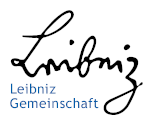- Das Institut
- Forschung
- Diktaturen im 20. Jahrhundert
- Demokratien und ihr historisches Selbstverständnis
- Transformationen in der neuesten Zeitgeschichte
- Internationale und transnationale Beziehungen
- Editionen
- Dissertationsprojekte
- Abgeschlossene Projekte
- Dokumentation Obersalzberg
- Zentrum für Holocaust-Studien
- Berliner Kolleg Kalter Krieg
- Publikationen
- Vierteljahrshefte
- Archiv
- Bibliothek
- Zentrum für Holocaust-Studien
- Aktuelles
- Termine
- Presse
- Neuerscheinungen
- Aus dem Institut
- Themen
- München 1972
- Confronting Decline
- Demokratie. Versprechen - Visionen - Vermessungen.
- Feministin, Pazifistin, Provokateurin
- Der Mauerbau als Audiowalk
- Digitale Zeitgeschichte
- Zeitgeschichte Open
- Der FC Bayern München und der Nationalsozialismus
- Das Deutsche Verkehrswesen
- Zukünfte am Ende des Kalten Krieges
- Von der Reichsbank zur Bundesbank
- Bundeskanzleramt
- Geschichte der Nachhaltigkeit(en)
- Wandel der Arbeit
- Demokratische Kultur und NS-Vergangenheit
- Geschichte der Treuhandanstalt
- Akten zur Auswärtigen Politik
- Dokumentation Obersalzberg
- Edition "Mein Kampf"
- Anonyma - Vom Tagebuch zum Bestseller
- "Man hört, man spricht"
- Newsletter
- Diktaturen im 20. Jahrhundert
- Demokratien und ihr historisches Selbstverständnis
- Transformationen in der neuesten Zeitgeschichte
- Internationale und transnationale Beziehungen
- Editionen
- Dissertationsprojekte
- Abgeschlossene Projekte
- Dokumentation Obersalzberg
- Zentrum für Holocaust-Studien
- Berliner Kolleg Kalter Krieg
Making Sense of Catastrophe: The Jewish leadership in Romania (1938-1948) (Working Title)
Projektinhalt:
Starting in 1938, those defined as Jews in Romania were subjected to different and escalating forms of persecution – social and political discrimination, economic exploitation, recruitment to forced labour, pogroms, deportations, summary executions and eventually mass murder. Nearly half of the country’s pre-war Jewish population was killed during the Second World War and the Holocaust. Yet, around 300,000 Romanian Jews also survived in Romania during the war. As of 1948, by which time the Communists had secured their hold on power, an estimated 400,000 Jews were living in Romania. The Romanian Jewish community was represented throughout the period 1938-1948 by a range of individuals and institutions. Who were these people and groups? How much agency did they have? How did the situation evolve of Jews and what differences existed across groups and areas? Most existing studies of the Holocaust in Romania focus on ‘the perpetrators’ - the rise of the fascist Iron Guard and Antonescu’s policies. As a result, the role of the Jewish leadership in Romania is often taken for granted or merely viewed as reactive. However, as recent research on the Holocaust in other parts of Europe has shown, Jews deserve to be viewed as historical actors in their own right. By focusing on a small number of key figures in the self-proclaimed Jewish leadership and their interaction with different actors and organisations (e.g. the Romanian government, international organisations and underground movements), this project thus seeks to shed new light on the Jewish responses to persecution in Romania in the period 1938-1948 and rethink existing turning points.






